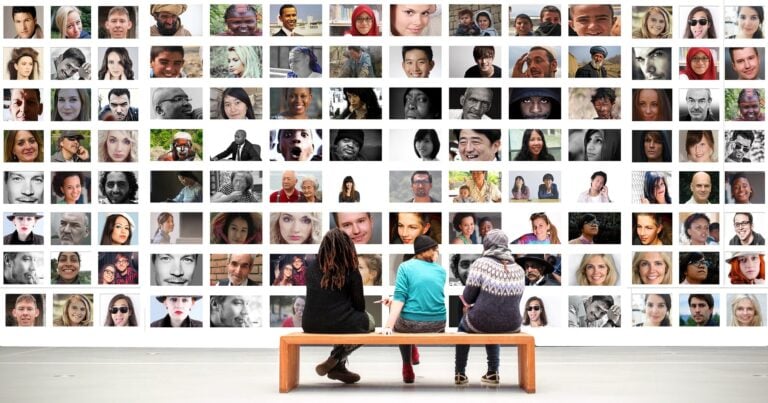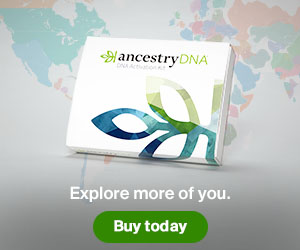If you’ve taken a DNA test you know how amazing it can be to get your results back for the first time. After you’ve spent some time scanning your matching ethnic regions and digging through the list of far-off cousins, lots of people simply let the results sit, unsure what to do next.
Whether you are a passionate family history scientist who is wanting to use DNA to enhance your research and construct on your ancestral tree, or you just took a test out of passing interest, here are some things you ought to and shouldn’t finish with your outcomes.
Please know that we have actually partnered with a few of the business linked to on this page and may get a fee if you choose to take advantage of their services after following a link on our website. We just advise services we trust ourselves.
4 Things You Should Do With Your DNA Results (and 3 You Shouldn’t).

If you are still trying to pick which test to take please check out the DNA testing contrast guide here– which takes a thorough take a look at Family Tree DNA, MyHeritage DNA, AncestryDNA, and 23andMe. YOU SHOULD– Protect Your Privacy.
The period after you get your DNA test results might not appear like the right time to start considering personal privacy settings, but many people don’t consider what information will be available to others, and how to safeguard it, till this time.
When you take a test you are given certain choices about how to share your data– with each screening company providing different choices. Generally, you can decide in or out of cousin matching (enabling others to find you based upon shared DNA) and change the amount of information those cousins can see, along with choose if and how they can call you. You may have the alternative to change your contact email, noticeable name (how matches will see you), profile image and more.
The company you tested with might likewise offer some choices about how your DNA information can be utilized for research.
To find these settings log into your DNA account and look for your account settings area– this is nearly always in the upper best hand corner of your screen. Ancestry links directly to these choices when seeing outcomes with a large Settings button.
This is likewise normally the location where you can delete (or make a request to erase) your results if you pick to no longer have them stored, add or change linked ancestral tree (on MyHeritage and Ancestry) and download your raw DNA file.
It is very important to a minimum of review these settings, even if you choose not to make any changes.
YOU SHOULDN’T– Assume Your Results are Unchanging.
Many people are unaware that DNA ethnic background reports, and the algorithms that determine matches, are updated on a regular basis. It can be puzzling to visit one day and discover that your ethnic culture portions have shifted or that you are no longer listed as a match with certain people. In cases like this you will wish to have a record of past reports.
For this reason it is an excellent concept to download your outcomes regularly so that you have these results for contrast when modifications are made.
YOU SHOULD– Download Everything.
The easiest way to download your ethnic culture results is to search for the Print button readily available from all significant companies and after that pick to Print to PDF, and choice offered on lots of computer systems.
If this is not an option on your computer you can set up a totally free PDF printer (look for PDF printer in google and select a choice to set up) or take screenshots of your results with a tool like Evernote’s Web Clipper– used by many genealogists. Even highlighting ethnic culture amounts with your cursor and copying them into a note pad is better than nothing.
You’ll likewise wish to download your match list. This will not only allow you to have a back up however will likewise make it easier for you to use these results in your research study. MyHeritage and Family Tree DNA make it easy to download outcomes– on MyHeritage you will discover the alternative under the menu on your match list (search for 3 vertical dots) and on FTDNA you will discover the option at the bottom of the matches pages.
For 23andMe and AncestryDNA you will require external tools. such as the DNAGedcom Client or the free AncestryDNA Helper Chrome extension.
Lastly, download a copy of your RAW DNA file. This will be required if you prepare to benefit from free and low-cost ethnic culture reports and tools from other providers. This choice is typically discovered in the account settings location discussed earlier.
Similar to all of your genealogy files, do make sure to back whatever up in a trusted online space. See a list here of totally free and low-cost options.
YOU SHOULDN’T– Upload Your Results to Every Site That Accepts Them.
What else can I make with my DNA results or data?
This is a typical question. As hereditary testing for genealogy becomes a growing number of popular, numerous business are providing complimentary and paid reports that permit you to broaden on the tests you have already taken by publishing your data to their sites. Reports range from ethnic background breakdowns to medical insights and even whole health insurance. Some claim to be motivated by research while others are plainly encouraged just by profit.
We motivate you to be extremely critical when picking who to publish your information to. Check out personal privacy policies thoroughly, learn for how long a business as been in business and what their future strategies are, and try to find recommendations from trustworthy blogs and sites (like those we have listed in the future) BEFORE relying on a business with your hereditary information.
We have actually noted numerous well-known and trusted options that offer complimentary and low-priced reports in the next area or you can read this devoted guide on DNA upload alternatives.
YOU SHOULD– Get More Reports from Safe Providers.
A huge part of making the best use of your DNA test results is to protect more than one report and matches list. Each business evaluates and displays your results in an unique way (to better comprehend why this matters and how to make sense of it all read this article) and supplies an unique list of possible hereditary cousins (for those companies that offer matches).
Fortunately, there are a number of locations to get these additional reports and tools from. Listed below we have actually listed 4 trusted location to upload your DNA to that we have actually used ourselves and that have a proven track record of secure data management and accountable use.
Do keep in mind, nevertheless, that some sites allow anybody to gain access to these results so you are always taking a privacy threat when picking to submit. Just you can decide to do this on your own and you need to ALWAYS get authorization before uploading other individuals’s results.
MyHeritage uses their ethnic background report and cousin matching totally free when you upload your results here. Read more about their DNA system and how it can be utilized for genealogy here.
Ancestral tree DNA offers complimentary cousin matching when you submit your results and an ethnic culture report and additional tools for $19. Learn how to benefit from that here or head straight to the upload page.
GEDmatch enables uploads of raw DNA from just about any testing business and offers numerous reports and tools. This site needs more effort to utilize than the others on this list– but if you are all set to geek out then GEDmatch is for you. Read our article on utilizing the service here.
YOU SHOULDN’T– Take Your Results at Face Value.
Here at Family History Daily we enjoy that household historians have the opportunity to explore their heritage through DNA screening, however what we do not love is how simple it is to get puzzled. Many people test, get their reports and after that merely take the information at stated value … bewildered regarding how the areas on their computer screen correspond with what they know of their family’s past.
We wrote an entire article about this problem that describes, with examples, how easy it is to misinterpret your hereditary reports and how to better understand them: Why You Might Be Reading Your DNA Results All Wrong.
YOU SHOULD– Take the Time to Really Understand Your Results.
Now that we’ve attended to the concern of how simple it is to misinterpret your outcomes, we want to advise you that education is really essential if you wish to utilize your results to understand more about your family’s past and grow your family tree.
To begin informing yourself, check out some of the information in the short articles in our Genetic Genealogy area here. Consider signing up to take a course that will guide you through the procedure of using your outcomes in your research. Family History Daily’s courses open again this fall with an expanded DNA section.
And, naturally, there are many high quality academic products elsewhere online– some free and some at an expense. Each testing provider offers their own tutorials, and locations like GEDmatch offer education products also. The FTDNA forums are a fantastic place to ask concerns if you need some aid from the screening community.
You’ll likewise wish to have a look at these established sites, which are some of our favorites.
DNAeXplained.
The Genetic Genealogist.
The Legal Genealogist.
The International Society of Genetic Genealogy (ISOGG).
Pleased Testing!

Leave a Reply